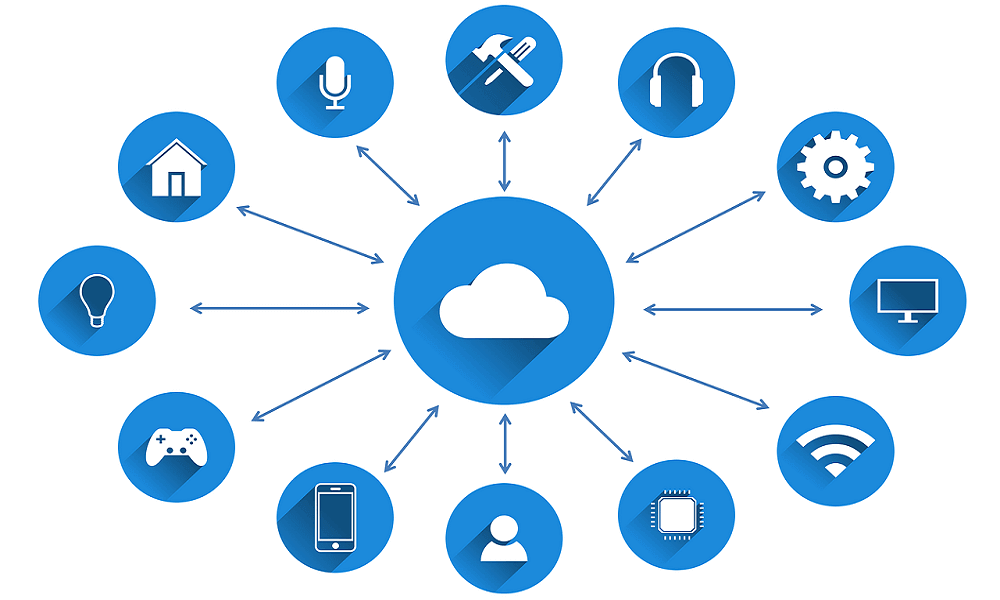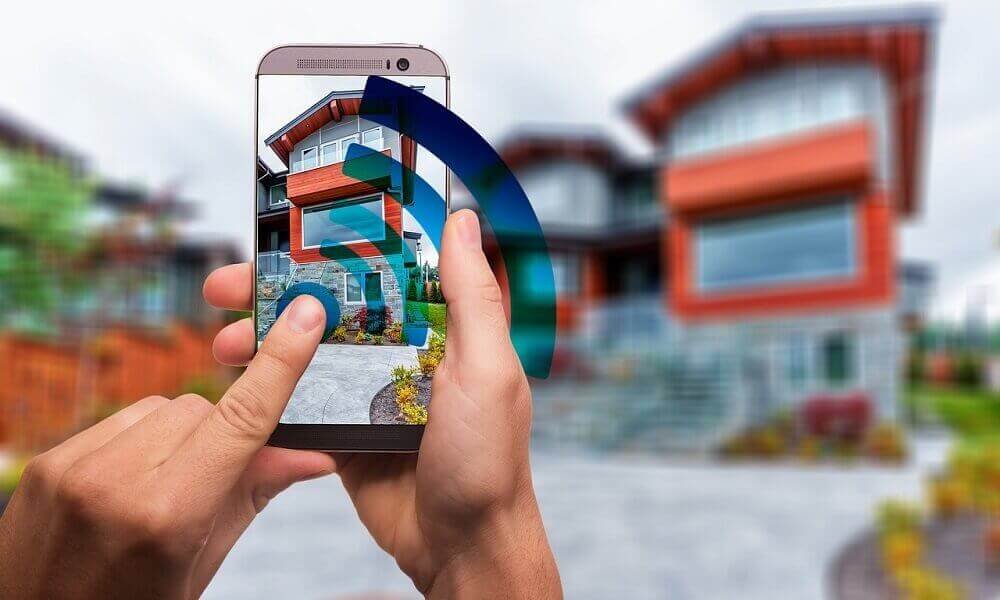In this blog post, we’ll learn how home security using Internet of Things can safeguard your home and loved ones.
Introduction
In an age where technology reigns supreme, the concept of home security has evolved significantly.
With the Internet of Things (IoT), it’s now possible to safeguard your home and loved ones more efficiently and effectively.
This article delves into the world of home security using Internet of Things, providing insights, tips, and expert advice to help you make your home safer.
Table of Contents
Home Security Using Internet of Things

Home Security Using Internet of Things (IoT) is a cutting-edge approach to safeguarding your home and loved ones in the digital age. In this innovative paradigm, IoT technology empowers homeowners with enhanced control, monitoring, and automation of their security systems.
IoT-based home security systems consist of a network of interconnected devices, such as smart cameras, sensors, locks, and alarms, all designed to work in harmony. These devices can detect, communicate, and share data over the internet, enabling homeowners to monitor and manage their security in real-time, even from remote locations.
One of the standout advantages of IoT in home security is 24/7 surveillance. Smart cameras, for instance, provide high-resolution video footage and can detect unusual activity, sending instant alerts to your smartphone. IoT also enables remote access, granting you the ability to control and monitor your security systems with ease.
Customized alerts and energy-efficient features make IoT home security not only robust but also cost-effective. The flexibility and versatility of these systems allow homeowners to tailor their security measures to their specific needs, providing peace of mind and convenience.
In a nutshell, Home Security Using Internet of Things represents the future of home protection. With IoT, you can enjoy a safer and smarter living environment, where technology works tirelessly to keep you and your loved ones safe, day and night.
What is Internet of Things?

The Internet of Things (IoT) is a concept that refers to the interconnected network of physical devices, vehicles, appliances, and other objects embedded with sensors, software, and network connectivity, allowing them to collect and exchange data.
In simpler terms, IoT involves everyday objects that are equipped with the ability to communicate and interact with each other over the internet.
These IoT devices can include anything from smart thermostats and wearable fitness trackers to industrial machines in manufacturing plants.
The key feature of IoT is that these devices can transmit data to a central hub or other connected devices and, in turn, receive instructions or information, all without the need for human intervention.
Smart Homes and Enhanced Security

The convergence of Smart Homes and Enhanced Security is ushering in a new era of safety and convenience. By integrating Internet of Things (IoT) technology, homeowners can transform their properties into intelligent, responsive environments that offer a heightened level of security.
These smart homes feature interconnected devices like high-definition smart cameras, sensors, and locks, all of which work together seamlessly to protect the premises.
One of the standout features is round-the-clock monitoring. IoT-driven security systems provide 24/7 surveillance, ensuring that your property is safeguarded at all times.
Additionally, they offer remote access, allowing homeowners to oversee and control their security systems from virtually anywhere, providing peace of mind, even when they’re away.
Smart Homes and Enhanced Security represent a quantum leap in protecting what matters most.
Advantages of IoT in Home Security
Here are some advantages of IoT in Home Security that make IoT a game-changer:
- Round-the-Clock Monitoring: IoT-based home security systems offer 24/7 surveillance, ensuring that your property is always protected.
- Remote Access: Control and monitor your security systems from anywhere, providing peace of mind even when you’re away.
- Customized Alerts: IoT security systems can be tailored to your preferences. You can receive instant notifications on your smartphone for specific events, such as a door opening or motion detected in a certain area, allowing for prompt action and peace of mind.
- Energy Efficiency: Many IoT devices are designed with energy conservation in mind. They can automatically adjust settings based on your habits, helping you reduce your energy consumption and, in turn, save money on utility bills.
- Integration with Smart Devices: IoT security systems can seamlessly integrate with other smart devices in your home, such as voice assistants like Amazon Alexa or Google Assistant. This interconnected ecosystem enables you to control your security system using voice commands, further enhancing convenience.
- Advanced Analytics: Some IoT security systems come equipped with advanced analytics that can discern between ordinary events and potential threats. This reduces false alarms and ensures that you’re alerted only when necessary.
- Safety During Emergencies: IoT devices can be programmed to automatically respond to emergency situations, such as a fire or break-in. They can unlock doors, turn on lights, and notify the authorities, ensuring swift action and safety for your household.
- Ease of Installation: Many IoT security devices are designed for easy installation, making it a feasible DIY project for homeowners. This eliminates the need for extensive wiring and professional installation costs.
These advantages collectively enhance the efficiency, convenience, and cost-effectiveness of home security using Internet of Things, making it an attractive and comprehensive solution for safeguarding your home.
IoT Home Security Devices

IoT Home Security Devices encompass a diverse range of cutting-edge technologies, each designed to bolster the security of your home. Here are some more IoT devices that contribute to a comprehensive security system:
- Smart Cameras: These devices offer high-resolution video footage and can detect unusual activity, sending alerts to your smartphone.
- Smart Sensors: Window and door sensors are crucial in monitoring unauthorized entries and notifying you immediately.
- Smart Locks: Ensure your home is secure with IoT-enabled smart locks that allow remote access control and digital keys.
- Smart Doorbells: These devices incorporate cameras and two-way audio, allowing you to see and communicate with visitors at your doorstep. Some models even have facial recognition technology.
- Window and Glass Break Sensors: These sensors detect when a window is opened or when glass breaks, providing an additional layer of security, especially for ground-level windows.
- Smart Motion Detectors: These devices use advanced technology to detect motion in specific areas of your home. They can differentiate between human movement and pets, reducing false alarms.
- Smart Lighting: IoT-enabled lighting systems can be programmed to simulate your presence at home even when you’re away. This deters potential intruders and enhances security.
- Smart Smoke and Carbon Monoxide Detectors: These detectors not only alert you in the event of a fire or carbon monoxide leak but can also be integrated into your overall home security system.
- Smart Fences and Gates: IoT technology can be applied to your property’s fencing and gates, enabling automated access control and monitoring. You can receive alerts when someone enters or exits your property.
- Smart Safe: A smart safe with IoT connectivity adds an extra layer of security for your valuable possessions. It can alert you if someone attempts to tamper with or open it.
- Water Leak Sensors: These sensors detect water leaks and notify you promptly, helping you avoid potential water damage and flooding in your home.
- Biometric Scanners: Biometric access control devices, such as fingerprint or facial recognition systems, offer highly secure entry to your property.
- IoT-based Intercom Systems: These systems provide secure communication and access control, allowing you to verify the identity of visitors and grant or deny entry.
The integration of these IoT home security devices creates a robust and holistic security ecosystem, offering comprehensive protection for your home and loved ones. This array of devices not only enhances security but also provides peace of mind, convenience, and control over your home’s safety.
Securing Your Network

Securing Your Network is paramount when implementing IoT-based home security. While IoT devices offer remarkable advantages, they also introduce potential vulnerabilities that could be exploited by hackers.
To safeguard your network and protect your smart home, follow these crucial steps:
- Strong, Unique Passwords: Change default passwords on your IoT devices and use strong, unique combinations. This makes it more challenging for unauthorized users to gain access.
- Regular Firmware Updates: Manufacturers often release updates to patch security vulnerabilities. Ensure your IoT devices are running the latest firmware to guard against known threats.
- Network Segmentation: Create a separate network for your IoT devices, isolating them from your personal devices. This way, a breach of your smart security system won’t compromise your entire network.
By taking these measures, you can enjoy the benefits of IoT home security while minimizing the associated risks.
Maximizing IoT for Home Security
Maximizing IoT for Home Security involves taking full advantage of the capabilities that these interconnected devices offer to create a comprehensive and efficient security system. Here are some additional strategies to make the most of IoT for safeguarding your home:
- Voice Assistants Integration: Connect your IoT home security system with popular voice assistants like Amazon’s Alexa or Google Assistant. This integration enables you to control and monitor your security devices through voice commands, making it incredibly convenient and user-friendly.
- Geo-Fencing: Implement geo-fencing technology to create virtual boundaries around your property. When an authorized person or device crosses these boundaries, your system can automatically trigger alerts or certain actions. This is a useful feature to deter intruders and ensure you’re aware of who enters or exits your premises.
- Emergency Services Integration: Some IoT home security systems can directly alert the authorities, such as the police or fire department, in the event of an emergency. This reduces response time during critical situations and can be a lifesaver in case of a break-in or fire.
- Smart Scheduling: Utilize scheduling features to automate your security system. For example, you can set your lights to turn on and off at specific times to simulate your presence when you’re away, further deterring potential intruders.
- Real-time Monitoring and Notifications: Configure your IoT devices to provide real-time alerts and notifications to your smartphone. This keeps you informed about any security breaches or unusual activity, allowing you to take immediate action.
- Remote Access Control: Use your smartphone or a web portal to remotely control and monitor your IoT devices. This feature gives you the flexibility to manage your security system from anywhere in the world, providing peace of mind whether you’re at home or traveling.
- Security Automation: Set up automated actions triggered by specific events. For instance, you can program your smart cameras to start recording when motion is detected or your smart locks to automatically lock the doors after a certain time. These features enhance the efficiency of your security system.
By incorporating these strategies, you can maximize the potential of IoT for home security. This not only enhances the safety of your household but also simplifies the management of your security devices, creating a more convenient and proactive approach to safeguarding your home and loved ones.
The Future of Home Security
The integration of IoT into home security is just the beginning. As technology continues to advance, we can expect even more sophisticated solutions in the future. Some exciting developments on the horizon include:
- Artificial Intelligence (AI): AI is poised to play a central role in the future of home security. AI-driven security systems will become more prevalent, with the capability to analyze data from various sensors and cameras. This analysis can differentiate between routine activities and potential threats, reducing false alarms and enhancing security.
- Machine Learning: As home security systems become more interconnected, they can “learn” from your habits and adapt to your specific needs. For example, they can recognize when you’re at home and when you’re away, adjusting settings and security measures accordingly.
- Blockchain Security: The use of blockchain technology can enhance the security and integrity of IoT devices. By providing decentralized and tamper-resistant data storage, blockchain technology can make IoT devices less susceptible to hacking and unauthorized access.
- Drone Surveillance: Drones equipped with advanced cameras and sensors will offer an aerial perspective for home security. These drones can be programmed to patrol your property, providing real-time video feeds and alerts in the event of a breach.
- Biometric Access: The use of biometric access control, such as facial recognition and fingerprint scanning, will become more widespread. This ensures that only authorized individuals can enter your home.
- Augmented Reality (AR) Security: AR glasses and headsets can provide homeowners with real-time security data and overlays. For example, when you look at your front door, AR can display information about who is there and whether they have authorization to enter.
- Enhanced Data Privacy: The future of home security will also focus on strengthening data privacy. As more data is collected, ensuring that this data is handled securely and in compliance with privacy regulations will be a top priority.
As technology continues to evolve, the future of home security promises more intelligent, adaptable, and secure solutions. These innovations will not only enhance safety but also provide greater peace of mind for homeowners looking to protect their loved ones and property in an ever-changing world.
IoT and Privacy Concerns
While IoT offers immense benefits, it also raises significant concerns about privacy. As we increasingly rely on interconnected devices, it’s essential to be aware of potential privacy issues and how to address them:
- Review Privacy Policies: Understand what data your IoT devices collect and how it’s used. Opt for devices with transparent privacy policies.
- Update Regularly: Keep your devices updated with the latest firmware to patch security vulnerabilities.
- Network Segmentation: Create separate networks for your IoT devices and your personal devices to minimize potential threats.
- Data Collection and Sharing: IoT devices often collect data about your habits, preferences, and activities. This data can be shared with manufacturers or third-party companies for analysis or marketing purposes. It’s vital to understand what data your devices collect and with whom it’s shared.
- Consent and Transparency: Manufacturers must provide clear, accessible privacy policies that outline what data is collected, how it’s used, and with whom it’s shared. Users should have the option to consent or opt out of data collection.
- Security Vulnerabilities: IoT devices can be vulnerable to hacking and data breaches. If your IoT devices are not adequately secured, hackers can gain access to your data or even control your devices. Regularly update device firmware and use strong, unique passwords.
- Data Encryption: Ensure that data transmitted between your IoT devices and the cloud is encrypted. This prevents unauthorized access to your data during transmission.
- User Control: IoT devices should allow users to control the data they share and the level of access these devices have to their personal information. Users should also be able to easily delete their data if desired.
- Third-Party Services: If you use third-party services or apps that connect with your IoT devices, review their privacy policies and permissions. Understand what data they have access to and how they use it.
- Network Security: Protect your home network to prevent unauthorized access to your IoT devices. Set up a strong, unique password for your Wi-Fi network and enable network segmentation to separate IoT devices from personal devices.
- Legal Frameworks: Familiarize yourself with the legal and regulatory frameworks in your region regarding IoT and data privacy. These laws may provide protections for your personal data and privacy rights.
IoT and privacy concerns are closely intertwined, and it’s crucial to stay informed and take proactive steps to protect your personal information while benefiting from the convenience of interconnected devices. By being aware of potential risks and following best practices, you can enjoy the advantages of IoT while safeguarding your privacy.
Leveraging IoT for a Safer Future
Leveraging IoT for a Safer Future is not merely a technological trend; it’s a profound shift in how we protect our homes and loved ones.
As IoT technologies continue to advance, homeowners gain unprecedented capabilities to fortify their security. Voice assistants, like Amazon’s Alexa and Google Assistant, allow for effortless, hands-free control of security systems.
Geo-fencing ensures that designated boundaries trigger alerts when crossed, enhancing security awareness.
Integrating emergency services like police and fire departments directly into your IoT security system promises swifter response times during critical moments.
IoT for home security represents the future of safety, promising greater convenience, efficiency, and, above all, peace of mind.
Incorporating IoT into Your Life
Incorporating IoT into Your Life is a dynamic and evolving journey. It begins with the basics—installing smart cameras, sensors, and locks to create a foundational security system.
As you grow more familiar with these devices, the IoT ecosystem can expand, incorporating additional elements such as smart lighting, thermostats, and voice assistants.
By automating daily routines and integrating your security system with your overall smart home setup, you can enjoy the convenience of a connected lifestyle.
For instance, IoT devices can synchronize your lighting and thermostat settings, ensuring energy efficiency while enhancing security.
Ultimately, incorporating IoT into your life is about creating a safer, more convenient, and fully interconnected environment that adapts to your needs and preferences.
Conclusion
Home security using the Internet of Things is not just a trend; it’s a smart and efficient way to protect your home and loved ones.
By understanding the potential of IoT, securing your network, and staying informed about the latest developments, you can create a robust and reliable home security system that adapts to your needs.
With technology constantly evolving, you have the tools at your disposal to stay ahead of potential threats and enjoy the peace of mind that comes with a secure home.
Frequently Asked Quesetions
Q: What is the Internet of Things (IoT)? A: IoT refers to a network of interconnected devices that can communicate and share data over the internet. In home security, IoT devices enhance surveillance and monitoring capabilities.
Q: How can IoT cameras improve home security? A: IoT cameras provide high-quality video surveillance and instant alerts, allowing homeowners to monitor their property remotely.
Q: Are IoT home security systems affordable? A: IoT home security systems come in various price ranges, making them accessible to a wide range of homeowners.
Q: What measures can I take to secure my IoT home security system? A: Secure your IoT devices by using strong, unique passwords, regularly updating firmware, and setting up a separate network for your smart devices.
Q: Can IoT home security systems integrate with other smart devices in my home? A: Yes, many IoT security systems can integrate with voice assistants, smart lighting, and other IoT devices for seamless control and automation.
Q: Are IoT home security systems prone to hacking? A: While no system is entirely hack-proof, taking security measures like regular updates and strong passwords can significantly reduce the risk.



